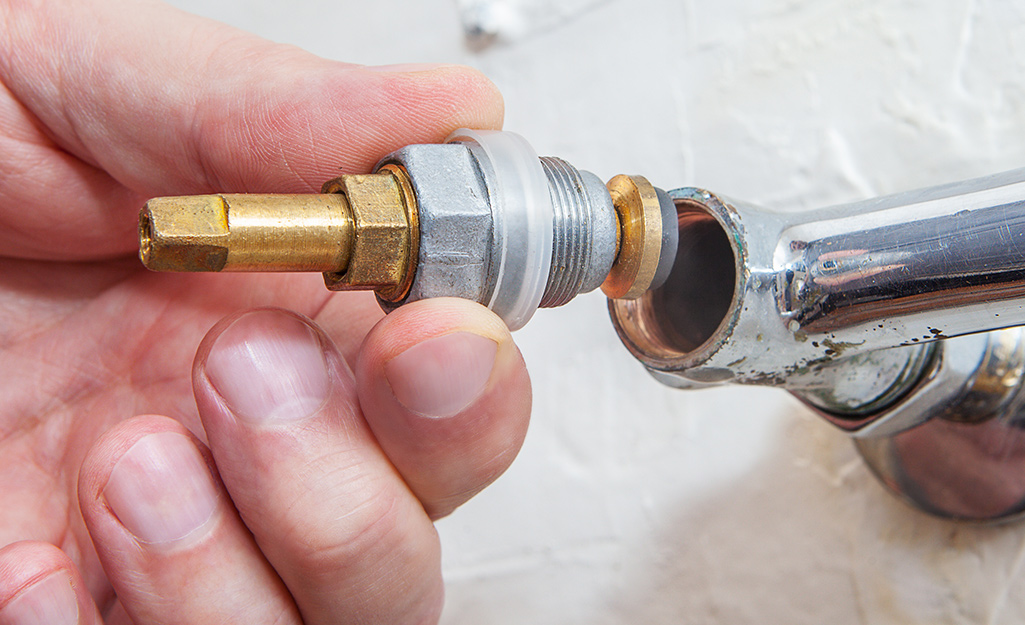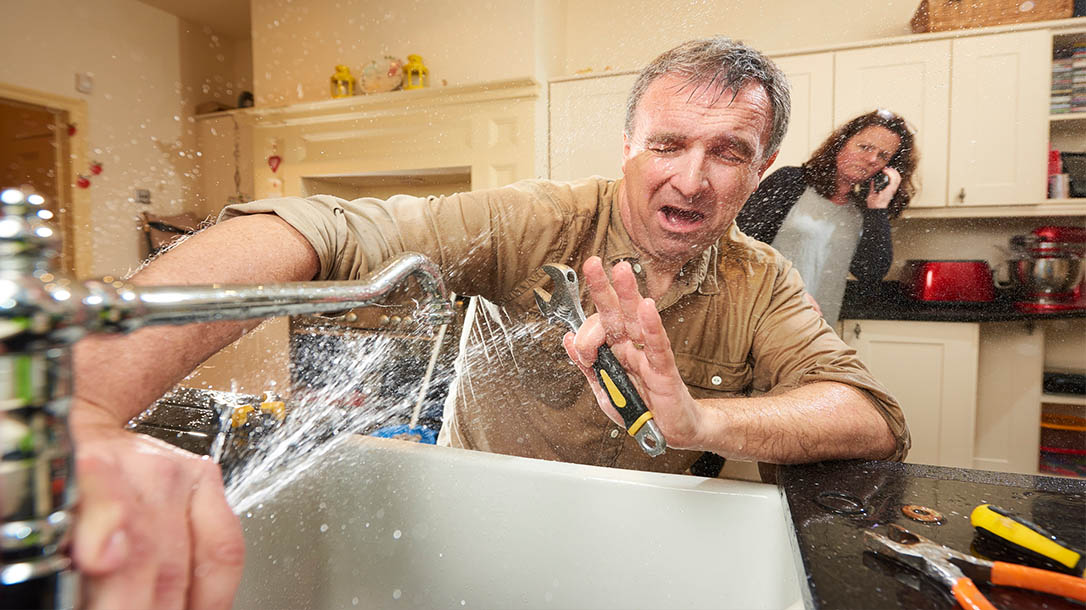My Benefits of Repairing a Dripping Faucet
My Benefits of Repairing a Dripping Faucet
Blog Article
What're your thoughts about Leaky Faucets: Why They Happen & What to Do About Them?

Dripping faucets may feel like a minor hassle, yet their impact surpasses just the aggravation of the audio. From wasting water to sustaining unnecessary financial expenses and health dangers, disregarding a leaking tap can result in different consequences. In this short article, we'll explore why it's important to resolve this common home concern promptly and effectively.
Wastefulness of Water
Ecological Impact
Trickling faucets contribute significantly to water wastefulness. According to the Epa (EPA), a single tap leaking at one drip per second can waste greater than 3,000 gallons of water each year. This not just stress water resources yet likewise affects ecological communities and wildlife dependent on them.
Financial Prices
Boosted Water Bills
Past the environmental influence, trickling taps can pump up water bills considerably. The built up wastage gradually translates right into higher energy expenses, which can have been prevented with prompt repair work.
Possible Residential Property Damage
In addition, extended trickling can cause harm to fixtures and surface areas surrounding the tap. Water buildup can trigger staining, rust, and also structural concerns if left unattended, leading to additional repair service prices.
Health and wellness Problems
Mold and Mold Development
The consistent presence of wetness from a dripping faucet produces an ideal atmosphere for mold and mildew and mildew growth. These fungi not just compromise indoor air high quality yet additionally position health and wellness threats, particularly for individuals with respiratory system problems or allergies.
Waterborne Illness
Stationary water in trickling faucets can become a breeding ground for germs and various other virus, raising the risk of waterborne illness. Pollutants such as Legionella microorganisms grow in stagnant water, potentially resulting in severe ailments when ingested or breathed in.
Do it yourself vs. Specialist Repair
Advantages and disadvantages of Do It Yourself Repair Service
While some might try to deal with a dripping tap themselves, DIY repairs come with their very own collection of obstacles. Without proper knowledge and tools, DIY attempts can exacerbate the issue or result in incomplete repair work, prolonging the problem.
Benefits of Working With a Specialist Plumber
Working with an expert plumber makes sure that the underlying root cause of the leaking tap is dealt with efficiently. Plumbings possess the knowledge and devices to diagnose and repair faucet issues efficiently, saving time and decreasing the threat of additional damage.
Step-by-Step Guide to Fixing a Dripping Tap
Devices Needed
Before trying to take care of a leaking tap, gather the necessary devices, consisting of an adjustable wrench, screwdrivers, replacement parts (such as washers or cartridges), and plumber's tape.
Usual Faucet Issues and Their Solutions
Identify the kind of faucet and the details concern causing the drip. Common troubles include worn-out washing machines, corroded shutoff seats, or damaged O-rings. Describe producer instructions or on-line tutorials for detailed guidance on fixings.
Safety nets
Regular Upkeep Tips
To avoid dripping taps, carry out routine upkeep such as cleaning aerators, checking for leaks, and changing worn-out components immediately. Additionally, think about installing water-saving tools or upgrading to extra effective fixtures.
Value of Prompt Repairs
Dealing with dripping taps as quickly as they're discovered protects against additional water wastefulness and prospective damages, ultimately conserving both water and money over time.
Influence On Residential Property Worth
Perception of Well-Maintained Building
Preserving a property in good condition, consisting of addressing maintenance concerns like dripping faucets, boosts its perceived worth and worth among potential purchasers or tenants.
Influence on Resale Worth
Properties with well-kept plumbing components, consisting of faucets, command higher resale worths in the property market. Dealing with leaking taps can contribute to a positive impact throughout residential or commercial property assessments and arrangements.
Ecological Responsibility
Private Payment to Preservation
Taking duty for fixing dripping faucets lines up with broader efforts towards water preservation and ecological sustainability. Every person's activities jointly make a significant impact on protecting valuable sources.
Lasting Living Practices
By focusing on punctual repair work and embracing water-saving behaviors, people add to lasting living techniques that profit both existing and future generations.
Verdict
Resolving a trickling tap surpasses plain convenience; it's an important action towards preserving water, minimizing economic prices, and guarding wellness and building. Whether via do it yourself repair services or specialist help, acting to repair leaking taps is a tiny yet impactful method to promote accountable stewardship of resources and contribute to a much healthier, a lot more sustainable future.
How to Fix a Leaky Faucet: Step-by-Step Repair Guide
A leaky faucet may seem like a simple annoyance, but if it's not fixed promptly, that leak could cost hundreds to potentially thousands. From water damage to mold, mildew, and high water bills, even a tiny leak can be catastrophic if left unattended. Damage like this can even affect the overall value of your home, so it's important to take the right approach for leaky faucet repair. You may need the help of a plumber in some cases, but we've got a few tips you can try on how to fix a leaky faucet before calling the pros.
Four Faucet Types
When you're learning how to fix a leaky faucet, the first step is knowing what kind of faucet you're working with! There are four common types.
Cartridge Faucets
Cartridge faucets come in one- or two-handled varieties. In one-handled cartridge faucets, hot and cold water combines in a single cartridge. In the two-handled versions, hot and cold water are controlled separately and mixed in the faucet.
Ball Faucets
Ball faucets have a single lever you push up and down to adjust the pressure and rotate to change the temperature. A slotted metal ball controls the amount of water allowed into the spout.
Compression Washer Faucets
They're the oldest type of faucet, but they're still used in many homes — especially older ones. Compression faucets have two separate handles that, when turned, raise or lower the washer that seals a water valve. This valve stops water from flowing through the faucet when it is turned off.
Disc Faucets
Disc faucets rarely need to be repaired due to their maintenance-free design. The water flow is controlled by two discs — the upper one raises and lowers against a fixed lower disc, creating a watertight seal. If your disc faucet starts leaking, you may need to replace the seals or clean residue buildup from the inlets.
Fixing a Leaky Faucet
Step 1: Turn Off the Water
Whether you're learning how to fix a leaky bathtub faucet or how to fix a leaky kitchen faucet, always turn off the water supply to your working area when you're fixing a leak. The last thing you want is a flood added to your list of things to fix.
Look for the shutoff valves below your sink or around the tub and turn them clockwise to stop the water flow. If your faucet doesn't have shutoff valves, you may need to turn off the water for the whole house. Check to make sure it's off by turning the faucet on. If nothing comes out, you're ready to start the repair.
Step 2: Take Apart the Faucet
How you disassemble your faucet depends on the type of fixture you have. You can use a flathead screwdriver to remove the caps on top of the handle or handles for cartridge and compression faucets. Inside, you should see handle screws. Unscrew these with a screwdriver to remove the handle.
Disc- and ball-style faucets will typically have an inlet screw near the handle, and removing that will reveal the interior of the faucet.
Detach the Valve Stem
For cartridge- and compression-style faucets, you'll see the inner valve stem or cartridge once you remove the faucet handles. If you have a compression faucet, unscrew the brass valve stem. If you have a cartridge faucet, pull out the cartridge. If your cartridge has been in place for a while, it may require some tools or extra force to remove it due to mineral deposits.
Examine and Replace Parts
Once you've removed the parts, check them out to confirm what needs to be replaced. You may see corroded rubber washers, O-rings, stems, or cartridges. On a ball-style faucet, check the seats and springs for damage.
If you need to repair a leaky disc faucet, check the inlet and seals on the lower disc.
Once you determine what parts must be replaced, visit your local hardware store. Bring the damaged parts with you to ensure you can purchase the correct components to replace them.
Clean Valves and Faucet Cavity
If you've removed a stem or cartridge, you may notice mineral buildup in the faucet's threads. Use white vinegar to clean the valve seat by soaking it for a few minutes, then scrub it away with a soft toothbrush and rinse with warm water. You can also clean the interior of the faucet in the same way.
Reassemble the Faucet
Once your faucet is cleaned and the required parts have been replaced, it's time to reassemble it. Put the pieces back together and slowly turn the water supply back on. Doing this slowly is crucial because too much initial water pressure can damage the new hardware you've just installed.
https://homewarranty.firstam.com/blog/how-to-fix-leaky-faucet

As a keen person who reads on Should I Repair or Replace a Leaky Faucet?, I was thinking sharing that excerpt was a great idea. For those who appreciated our page if you please consider to share it. Thanks a lot for your time. Revisit us soon.
Report this page